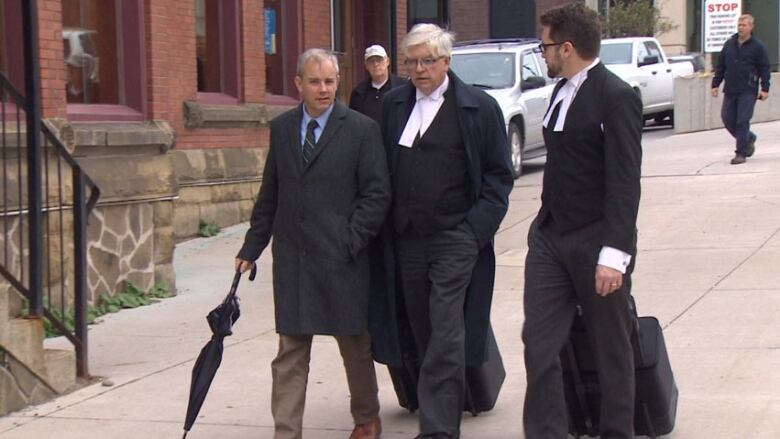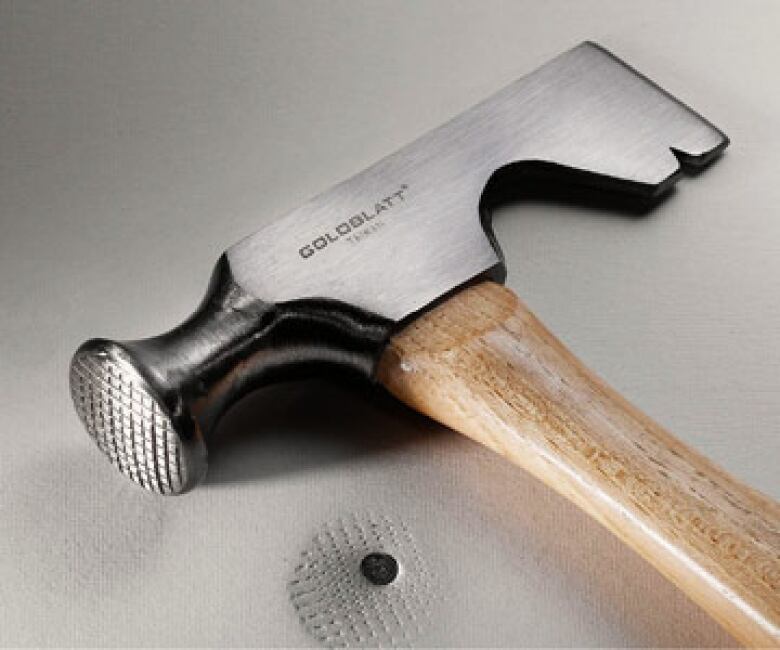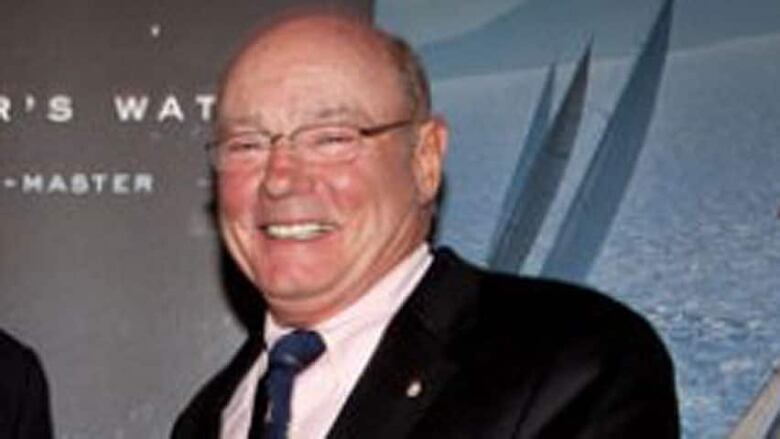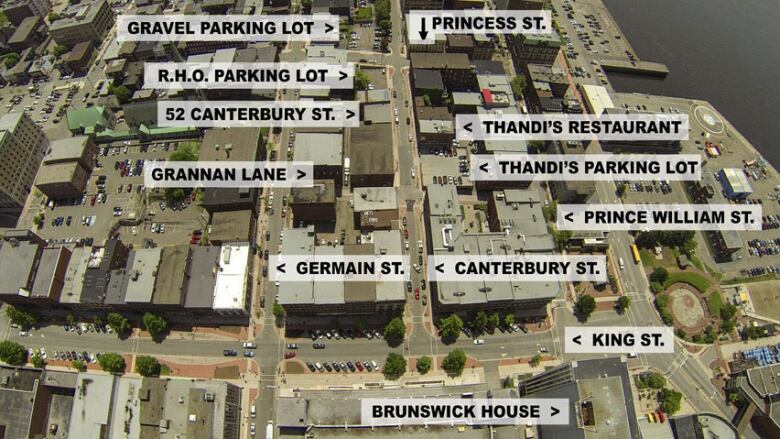Dennis Oland murder trial hears suspected weapon was drywall hammer
No weapon was ever found, lead investigator Const. Stephen Davidson testifies

Saint John police believe Richard Oland was killed with a drywall hammer,or "hammer-type" instrument, the lead investigator told Dennis Oland'smurder trial on Thursday.
It is the first timethe suspectedweapon has been revealed since the prominent businessman's bludgeoned body was discovered in his uptown office more than four years ago.
No weapon was ever found, said Const. Stephen Davidson.
-
Live blog:Dennis Oland's second-degree murder trial: Oct. 22
-
On mobile? Get live coverage of the trialhere
Richard Oland, 69, suffered 45blunt and sharp force injuries to his head, neck and hands.
The pathologist who conducted the autopsy previously testified the injuries wereinflicted by two separate surfaces one that caused round wounds about three centimetres in diameter with a faint cross hatching pattern in them, and one with a sharp edge, strong enough to "chop" through bone without breaking apart and leaving pieces in the wounds.

Drywall hammers, also known asdrywall hatchets,are hand tools that typically have a bevelled hammer headwith a waffle design on one side to nail upgypsum board, and a sharp axe on the other side to score the drywall.
Davidson testified there was "speculation" about the murder weapon being a drywall hammer following the autopsy, which was performed on July 8, 2011.
Oland's body wasfound the morning of July 7, lying face down in a large pool of blood in his investment firm office at 52Canterbury St.
Dennis Oland, 47, who was the last known person to see his father alive during a meeting at his office the night before, has pleaded not guilty to second-degree murder.

In a videotapedstatement to police on July 7, Dennis Oland said he had stopped at the wharf on his way home to Rothesayafter visiting his father to see if his children were there swimming.
He made thestop even though he was already running late and his wife Lisa, who was sick, was anxious for him to get home,the court heard on Wednesday, when the second half of the 2.5-hour statement was played.
Victim's cellphonestill missing
Police also never found Richard Oland's iPhone 4. It was the only item that went missing from the crime scene. His wallet, Rolex watch, electronics equipment and BMW, whichwas parked outside, were untouched.
Davidson testifiedabout cellphone tests he conducted as part of the investigation on March 22, 2012 eight months after the murder.
He was issued an iPhone 4 and, using the same service as the victim, made a series of calls at various locations in the Saint John and Rothesay areas to see which cellphone towers pickedup the signals.

Davidson said he started on Canterbury Street, near Oland's office, went to Princess Street, toward Water Street, back up to Kings Square, back to Canterbury Street and then down to Harbour Station, making 59 test calls.
About 145 additional calls were made from 14 other locations, including Highway 1 eastbound, near Strescon, and the old Rothesay Road exit, the court heard.
But some of Davidson'snotes about the longitudes and latitudesdidn't match up with the court evidence.
As a result, the trial, which was late getting started on Thursday morning and had a couple of recesses as lawyers worked on "some documentation," was adjourned for the day around noon.
"Some issues have arisen," Justice John Walsh told the jury. "Matters have to be resolved."
Court will start at 9 a.m. on Friday,instead of the usual 9:30 a.m., andthere will be an "abbreviated" lunch breakto help make up for lost time.
The trial, which started on Sept. 16,is scheduled to run until Dec. 18.
Suspect from Day 1
The jury heard Wednesday that Dennis Oland became a suspect the same day his father's body was found -- about 2.5 hours into a videotaped statement he gave police at the station.
Davidson saidOlandwas initiallyconsidered a witness someone who might have information that would help with the investigation.
Lead Crown prosecutor P.J. Veniot has not yet asked Davidson to explain why that changed.
During the statement,Olandtold Davidson he was not involved in his father's death and had no reason to want him dead.
He said he was wearing a navy blazer when he went to visithis father on July 6, around 5:30 p.m., but video surveillance of him earlier that day shows he was wearing a brown jacket.
The Crown has said a brown jacket seized from Oland's bedroom closet had four areas of blood on it that matched Richard Oland's DNA profile.












_(720p).jpg)


 OFFICIAL HD MUSIC VIDEO.jpg)
.jpg)



























































































